
Modern times call for modern measures. Magic: The Gathering is a card game that you probably heard from some of your classmates back in school or university. It’s been around for almost 3 decades and it’s been going strong due to its complexity and variety. But the modern age has no room for a classic card game, so you say. And with that, Magic: The Gathering decided to modernize, launching MTG Arena, a modern take on a classic. How does it fare? Let’s review MTG Arena to find out!

Magic: The Gathering Arena (MTG Arena) is an online card game based on Wizard’s of the Coast’s influential card game, Magic: The Gathering. While they do have MTG Online already running for sometime, the UI and design of that game doesn’t fare well in the modern setting. Given that we have giants like Blizzard’s Hearthstone getting a huge chunk of the digital TCG market, it’s either MTG evolves with the times to survive or stay niche and wither. It chose the former.
MTG Arena decided to be a Free-To-Play card game to get users to jump into it. This significantly lowers its barrier of entry. Unlike MTGO where-in you need to pay to get cards, MTGA rewards you with cards by just playing and completing daily objectives.
I guess what makes it superior than other Magic: The Gathering games (both official and not) is that it’s UI is very well done and well-made. It’s very similar to modern card games and the interface doesn’t bombard you with so much information. You can clearly get a grasp on what’s happening on the field, your hand and your opponent’s. It’s clean, responsive, and neat.
However, MTG Arena is limited by its scope. You can play Historical games but with very limited card options. The game itself mostly revolves on the current Standard. This means that whatever the current tabletop card game is running and releasing, expect it to be implemented on MTG Arena – complete with the rules, bans, and restrictions.

Open booster packs to get new cards. You get 1 Rare / Mythic Rare, 2 Uncommons, and 5 Commons.
Yes, MTG Arena is a game that you use cards to pummel your opponents into submission. But to get cards, you need to open packs. Although the game gives you a large amount of pre-built decks to get you on your journey, they sadly won’t get you anywhere. It’s a huge start but it won’t be enough to give you wins.
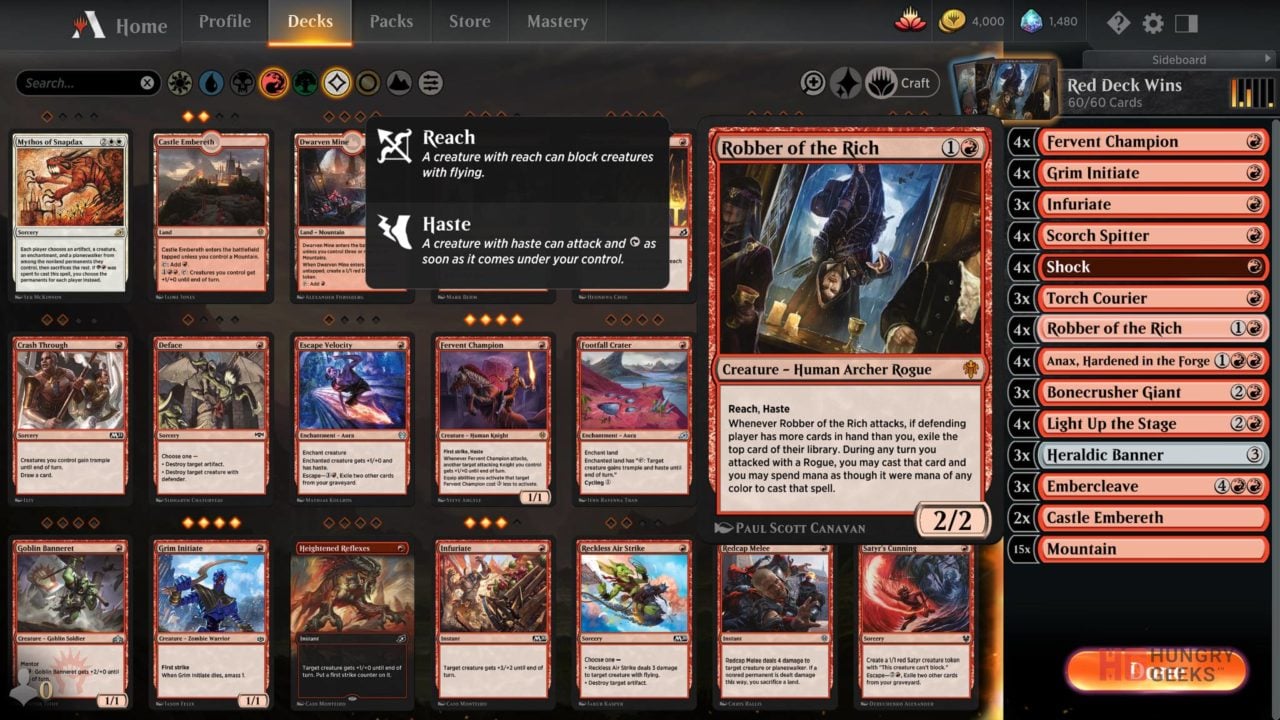
Deck construction is pretty easy and you can look for cards that you need. You can craft cards as long as you have a Wildcard of their rarity.
The game makes use of a Wild Card system. Think of it as a way of rewarding (or pitying) you for opening a lot packs. Even if you don’t get the card that you want, you fill up a meter that once filled, allows you to craft a card that you want. So in short, open packs = get more wild cards = get to craft the cards that you want. Note that these wild cards are also subject to rarities, so you need to fill in separate meters for uncommons, rares, and mythic rares.
So how do you buy packs? You can get them with gems, the game’s real-money currency (which we will discuss later). Or you can get packs by using in-game by completing daily quests to get Gold. If you do most of the challenges, you can get more than 1000 Gold per day, netting you a booster pack everyday.
As of the writing of this article, MTG Arena has no trading feature. Meaning that you and your friends cannot swap cards.
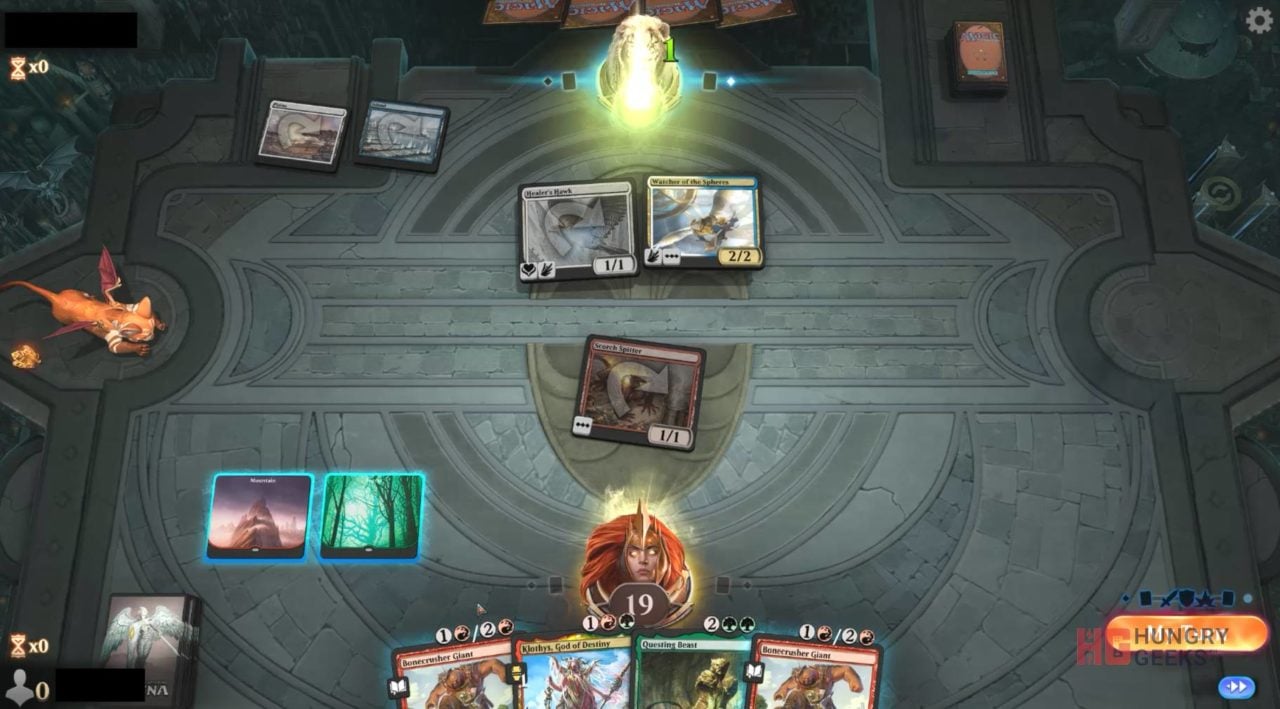
There are various win conditions in MTG Arena. You can choose your own and build a deck from there.
In Magic: The Gathering Arena, think of yourself as a summoner or a magician with the ability to conjure various monsters from different planes. The objective is simple: defeat the other mage. With that, the game takes several turns as you duke out and force the other side to 0 points.
If you’re familiar with the tabletop, you’ll be at home with MTG Arena. The game is complete. rules, setting, cards and all. The a match starts with the game randomly deciding which player starts and from then on, players must play lands and tap them to cast spells. Deck composition, timing, quick-thinking and decision-making is key here (and a bit of luck).
If you’re a beginner, the game does have a very detailed tutorial on how the game works. It does force you to take it and there’s no way to skip it if you’re a seasoned veteran. You get the free decks from this forced lesson, so it’s alright to trudge through it.
Aside from the Standard game, which is a 1v1 1-round affair, MTG Arena also has several game modes that players can join. It has its own exciting Draft system, wherein players open booster packs and get 1 card before they pass it to another player. This challenges the player’s deck crafting ability while making things a bit fair due to it being random for everybody. If you’re more into the 3-round fights, then you can opt into Traditional Standard. Just don’t forget to prepare a Sideboard for your fights.
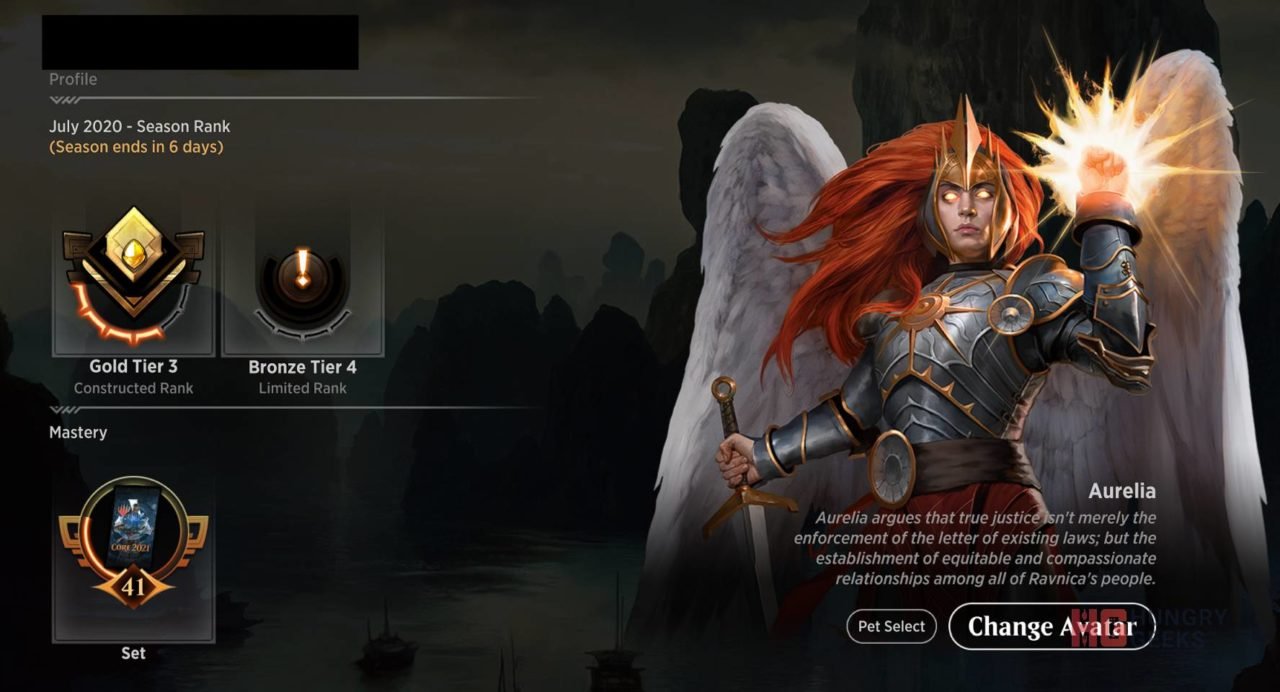
You can play ranked to increase your tier. The higher your tier, the more rewards you get once the month is over. Tier rank resets every month.
If you’re feeling a bit competitive, you can join the game’s Ranked match system. Here, the higher you rank, the more competent opponents you face. But if you manage to get a decent rank, you can do get free Booster Packs for your troubles. Also note that there are times that winning these events nets you an invitation to bigger events with larger prizes at stake.
Given the online nature of MTG Arena, the game itself is constantly being updated. So you can expect more game modes to be added in the near future.
Sometimes, MTG Arena holds weekly events that change up the rules. There are games that give players the chance to play pre-built decks with various themes. Others have you play with decks that break the 4-card limit rule, with your deck having more than 4 copies of a card. They’re exciting, and it’s fun to see the developers playing and experimenting with the established rules. Try to have fun trying these game modes as they do reward you with a card, gold, and EXP for trying them out.
Sometimes, these events tend to be very popular and they even get cemented into the main game mode lineup.
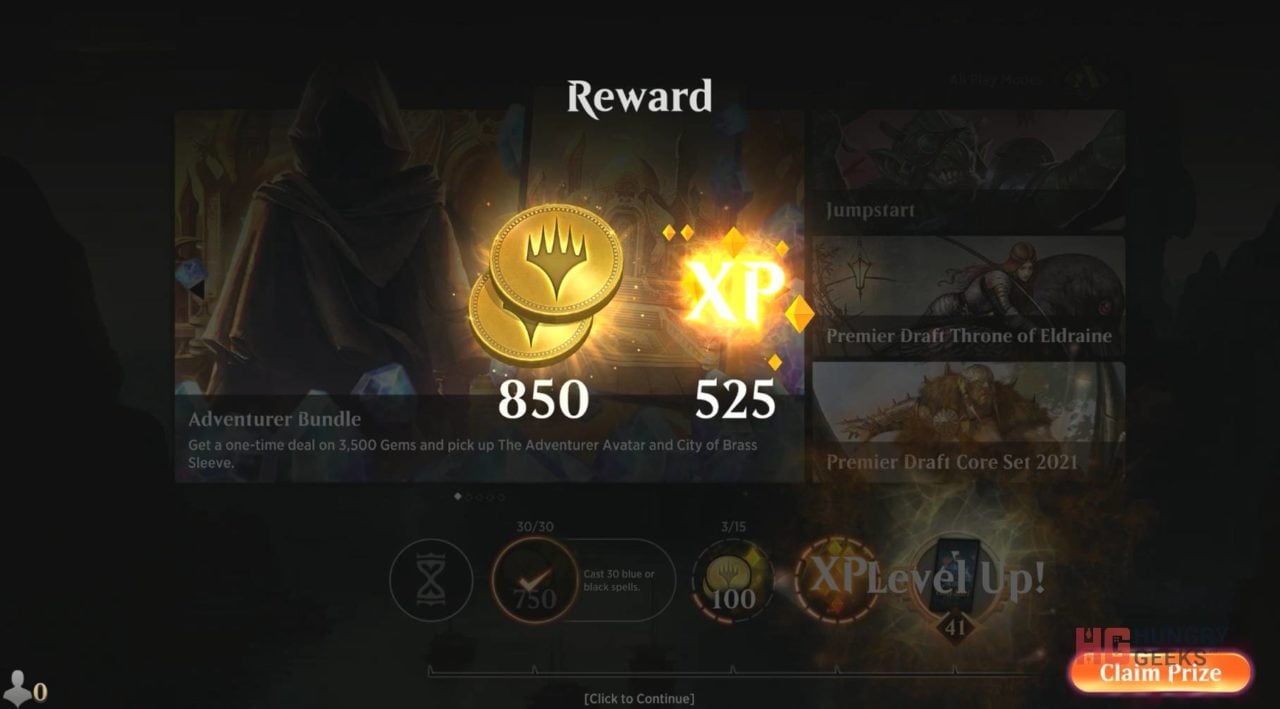
Complete daily quests to get gold and XP for your Mastery. You get Mastery rewards regardless if you bought it or not. You do get better rewards if you did.
As discussed above, the game has 2 currencies: gold and gems. You can get gold for doing events and completing objectives. Gems can be had by either paying for them or getting them from events. Gems can also be gained by buying them with Gold from the in-game store, but these offers are incredibly rare.
Gold can be used to buy Booster Packs to give you more cards and Wild Cards. You can also choose to save your Gold for better and rarer stuff, and also to join events. The game’s Store gets updated daily (11pm for us here in the Philippines), and it occasionally offers heavy discounts on Booster Packs, pets, sleeves, and cosmetics.
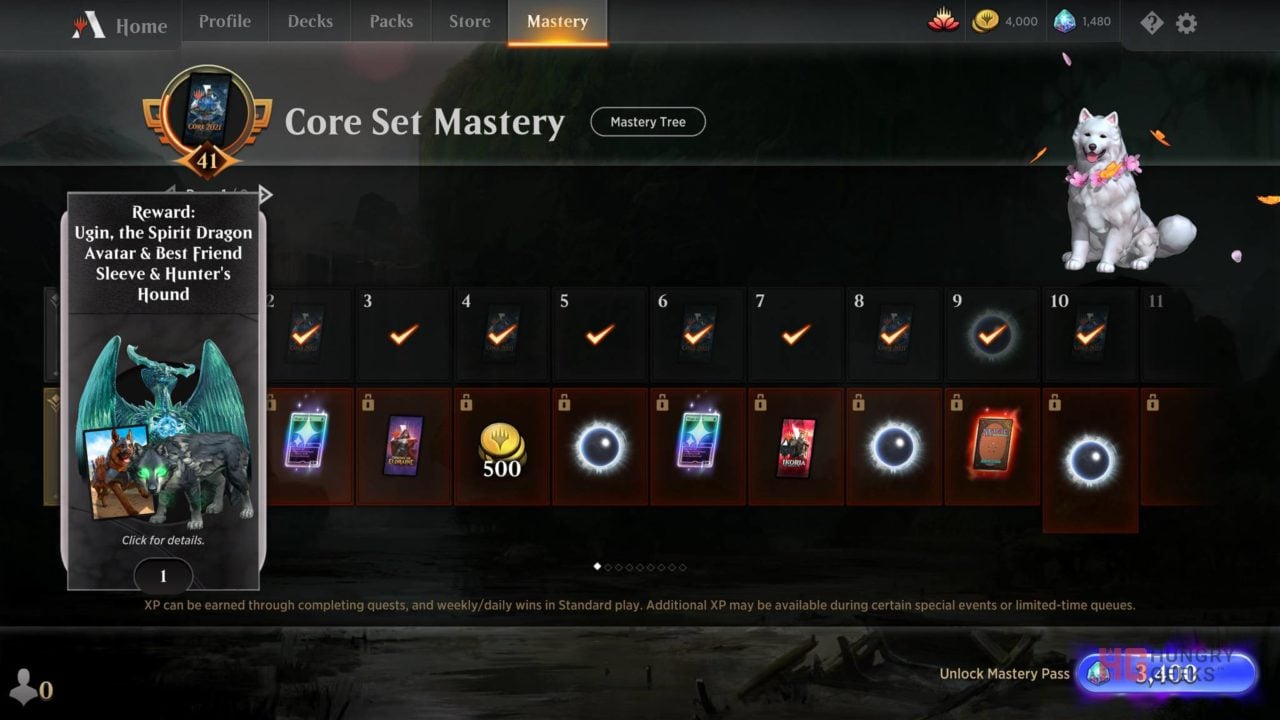
Mastery rewards you with expansion-exclusive sets, wild cards, and booster packs. Overall, they’re a good buy and can get you more than what it costs.
The game also has a Mastery system similar to most online games. To explain it simply: players buy a Mastery Pass with real money, you then complete objectives which fills the Mastery meter, afterwards you get in-game rewards. Mastery is pretty different because it offers unique rewards only to those that decide to partake in it. So if you passed up on it, sad to say that it’s gone forever, together with the unique goodies and cosmetics that it offers. Masteries rotate after 3 months, the time in which a new Magic: The Gathering expansion arrives. One the new expansion lands, the cycle repeats with a new Mastery.
Paying can get you somewhere in MTG Arena. To a certain extent. But although you can get cards that you need after splurging, the game also heavily involves quick-thinking and good decision making. Even if you have the best deck fueled by dozens and dozens of extremely rare Wild Cards, it’s safe to say that it’ll amount to nothing if you don’t know how to play it.
So in short, if you have a good grasp of the meta, your deck, and you’re very aware of your opponent’s next moves, you’ll more likely to get wins even with a modestly composed deck. Or you can be evil and make good use of a Red Deck Wins to crush the opposition.

Outsmarting your enemies and winning a tight match gives a very nice but hard to describe feeling.
If you like card games or if you’re a fan of the Magic: The Gathering, MTG Arena is a no-brainer. The game gives you a complete experience of the tabletop card game, just with added bling and convenience. The good thing about this is that unlike playing it physically, you don’t need to look for players, endure battling the same people over and over, and you also don’t need to haggle to trade. In this game, you just make a deck, play it, get crushed, repeat, and have fun. Very convenient, light, and easily digestible.
One thing that gives me a good sign that it’s a good free-to-play game is when I myself decide to use money on it. I do believe that when an F2P game offers you something great, you may choose to shell out money to “pay back” or “reward” the developers. You may not share the same sentiments as I do, but again, having that kind of feeling is a sign that this game is good and has given me an absurd amount of enjoyment. Which is quite a feat for me since I’m extremely strict when it comes to F2P games.

Deck Construction can take time and experimentation. It may be prudent to get a composition from the internet, but having a deck made and designed by you has a charm on its own.
I did use use the gems to buy the Ikoria Mastery just for the experience. Not because I need the cards (you can make about 2 competitive decent decks if you play for a month straight), but because I felt that I did get a good amount of enjoyment from it, especially during these trying times.
That’s not only me, but I did get some of my mates from highschool and university to play the game. And we’ve been using it to have fun, reconnect, and trashtalk each other again like the good old times. MTG Arena may be new, but the rules are the same as that from long ago, and it also teaches you more about thing you thought you knew (priority and instants is something I just learned).

With all that being said, I do recommend that you install this game if you’re a fan of Magic: The Gathering or if you’re looking for a card game that requires brains. Fair warning for those looking to try it: this game may cause you to lose sleep.
The game is currently available for both PC and Mac, with plans to launch it on mobile platforms in the near future. You can download the game here.
